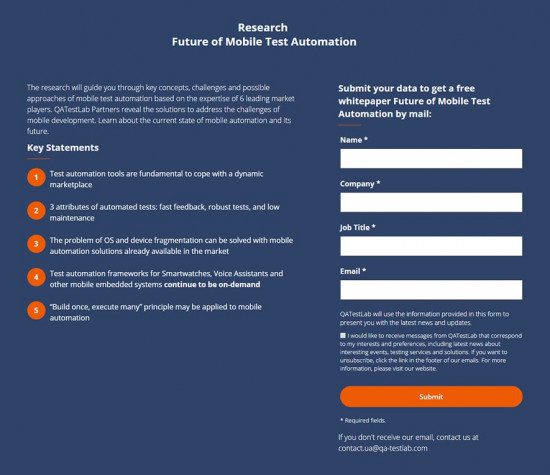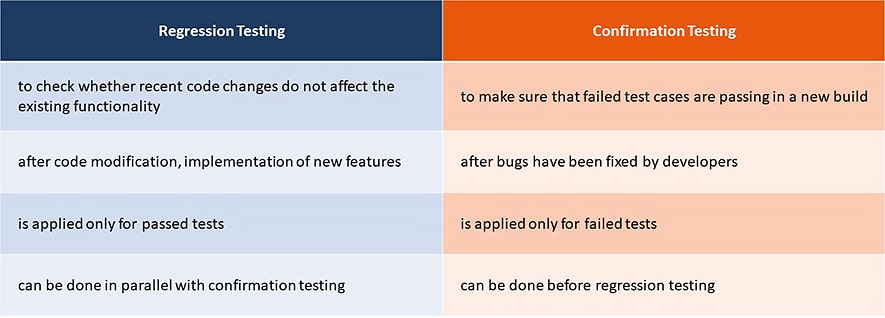Regression and Confirmation testing. What is the difference?
by Viktoria Byk | November 8, 2011 10:00 am
Note: this article was updated in September 2019.
In this article, we would like to separate the differences between these types of tests. But, where and why to use each of them? We will show you with descriptions, examples, and comparing.
What is regression testing? Examples
Regression testing is a kind of software testing the main aim of which is to make sure that the modifications in code do not affect the existing functionality. Regression testing is conducted after:
- implementation of new functions;
- fixing of defects;
- code refactoring to improve productivity;
- adaptation of hosting surroundings.
Let’s look at the examples of regression tests. Imagine such a situation, at the webpage there’s a form for downloading the research, for example, Future of Mobile Testing Automation[1] at QATestLab site. It was decided to add one more field “Job Title” to the input form. After its realization, a QA Engineer verifies the form to make sure the change causes no side effects. In such a case, regression testing is performed.

Confirmation testing (also known as retesting) is the execution of the failed test case with the same data in a new build after the bug fix. The testing scope is not changed during confirmation checking.
Retesting can be conducted to:
- confirm that bug has been fixed;
- make sure an issue is reproducible;
- ensure the system works as expected.
Here are the examples of the confirmation tests. Let’s imagine you want to subscribe to the QATestLab blog[2]. You input your valid email in the form and click the “Subscribe” button. But the button is not clickable – nothing happens. You open a bug as the button does not work as intended. A developer fixes the bug and assigns it to you for retesting, i.e., to make sure the button is active now.

You repeat the same steps – enter your valid email and push the button. And voila! You have successfully subscribed to the QATestLab blog. That means that the bug has been fixed.

Now it’s time to compare these two types of testing as they are not the same as you may see from the information provided above.
Regression vs confirmation testing

We hope that this article was useful to you. To get more useful advice, check the QATestLab blog.
Learn more from QATestLab
Related Posts:
- Future of Mobile Testing Automation: https://qatestlab.com/resources/whitepapers/mobile-automation-future/
- QATestLab blog: https://blog.qatestlab.com/
- Five Steps of Regression Testing: https://blog.qatestlab.com/2016/08/26/regression-testing-steps/
- 3 Reasons to Conduct Regression Testing: https://blog.qatestlab.com/2016/04/01/conduct-regression-testing/
- What Conclusions to Draw From Regression Tests Outcomes?: https://blog.qatestlab.com/2013/10/03/what-conclusions-should-be-drawn-from-regression-testing-outcomes/
Source URL: https://blog.qatestlab.com/2011/11/08/regression-and-confirmation-testing-what-is-the-difference/

